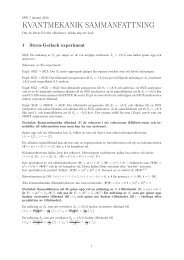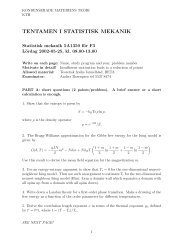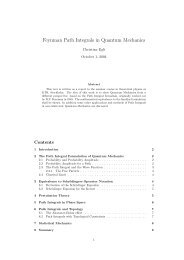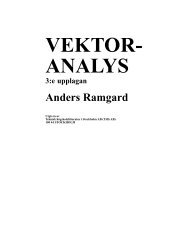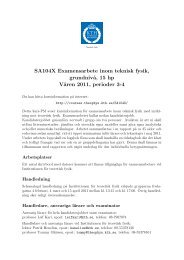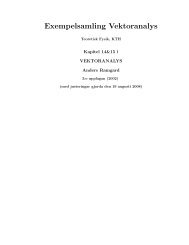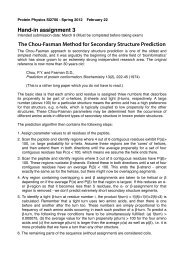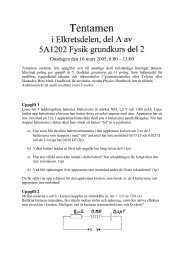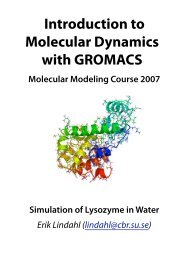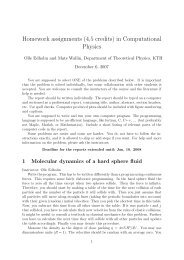[VAR]=Notes on variational calculus
[VAR]=Notes on variational calculus
[VAR]=Notes on variational calculus
You also want an ePaper? Increase the reach of your titles
YUMPU automatically turns print PDFs into web optimized ePapers that Google loves.
with F = F(u, u ′ , u ′′ , x) a C 2 functi<strong>on</strong> depending now <strong>on</strong> four variables: the integrand<br />
of this functi<strong>on</strong>al depends not <strong>on</strong>ly <strong>on</strong> the functi<strong>on</strong> u and its derivative u ′ but also <strong>on</strong><br />
the the sec<strong>on</strong>d derivative u ′′ . The Euler-Lagrange equati<strong>on</strong>s for such functi<strong>on</strong>al are<br />
∂F<br />
∂u(x) − d<br />
dx<br />
∂F<br />
∂u ′ (x) + d2<br />
dx 2<br />
∂F<br />
∂u ′′ (x)<br />
= 0. (46)<br />
It is straightforward to prove this by generalizing our derivati<strong>on</strong> of Fact A in Secti<strong>on</strong><br />
2.1 above — I <strong>on</strong>ly note that the last term comes from two partial integrati<strong>on</strong>s, and it<br />
has a plus sign since (−) 2 = +: <strong>on</strong>e minus sign for each partial integrati<strong>on</strong>. Note that<br />
the equati<strong>on</strong> in (46) is in general a ODE of order 4. We also note that in such problems<br />
it is usually worth going though the derivati<strong>on</strong> of the Euler-Lagrange equati<strong>on</strong>s from<br />
(10) since this allows <strong>on</strong>e to obtain the correct boundary c<strong>on</strong>diti<strong>on</strong>s. For example, <strong>on</strong>e<br />
may fix u and u ′ in x = x 0 but leave u and u ′ in x = x 1 arbitrary. One then obtains<br />
Euler-Lagrange equati<strong>on</strong>s with particular boundary c<strong>on</strong>diti<strong>on</strong>s which <strong>on</strong>e derives by<br />
computing (10) allowing variati<strong>on</strong>al functi<strong>on</strong>s such that η(x 0 ) = η ′ (x 0 ) = 0 but with<br />
η(x 1 ) and η ′ (x 1 ) arbitrary: keeping track of the boundary terms obtained by the partial<br />
integrati<strong>on</strong>s <strong>on</strong>e obtains the correct boundary c<strong>on</strong>diti<strong>on</strong>s.<br />
17


![[VAR]=Notes on variational calculus](https://img.yumpu.com/35639168/17/500x640/varnotes-on-variational-calculus.jpg)
